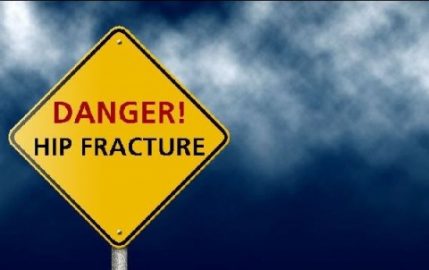
Traumas are most common for the sportspeople and those who lead an active way of life. But an average person also can get them anywhere. The consequences of traumas can be various – bruises, multiple teeth loss, fractures. The fractures are especially unpleasant because they restrict the abilities and influence the quality of life. Among the most unpleasant among them is a hip fracture.
The hip pain after its fracture that would not pass for a long time is considered to be quite a common complaint among the patients of hip pain specialists. Every patient feels this pain in his own individual way depending on many factors and peculiarities of his physical state of the organism in the period of recovery. One of the most important things though very often ignored by the patients recovering after hip fracture is to keep the doctor’s recommendations concerning the measures of rehabilitation after discarding the plaster cast.
Why is it so important not to forget about post-fracture rehabilitation advices? This phase of posttraumatic recovery period is considered to be a matter of superior importance in the process of fast reestablishing of the joints’ motor functions. The neglect of regular exercises appointed by doctor leads to the long lasting painful feelings.
What actually rehabilitation is? First of all, it is a complex of actions that have purposes of relieving the pain and edema appearance prevention. Here is the list of main tasks of rehabilitation:
- Muscular atrophy prevention.
- Solving a problem of vessels’ dysfunctions.
- Helping to treat lymphatic system dysfunctions.
- Improving the mobility of the recovering limb.
- Increasing the level of ligaments’ elasticity.
- Making the muscles stronger.
- Reestablishing the limb’s physiological functions.
Regular physical activity of the hip in post-fracture period will help to come back to the usual rhythm of life much sooner. It is necessary to note that hip fracture is characterized by the most difficult recovery period that requires more attention than other fracture cases. It is a very severe damage that demands staying in bed for a long time (from 3 to 8 months). The rehabilitation period begins as soon as the plaster cast is discarded.
The treatment begins from the therapeutic physical training. First goes the breathing gymnastics, then after about three days the arm swings and active torso movements are added. No one can tell how long the rehabilitation may last, even the most experienced specialist. It is all very individual. With the consideration of individual peculiarities of the case the complex of exercises is chosen for each patient.
If the patient feels pain during the exercises, this complex needs revision – the amount of them is to be reduced as well as the intensiveness. It is very important to signalize about pain during exercising because in some cases the continuation with such a state of things can lead to the displacement and, as the result, to the repeated operation.
The duration of the pain after the fracture is also a very individual thing. If the pain is strong enough, usually the analgesic remedies are prescribed. They help to relieve the pain but only temporarily, and it is better not to get very fond of them, because there exists the risk of getting used to these medications usage.
Not the least part in the process of post-fracture rehabilitation is played by the healthy feeding. In the period of recovery there are certain nutrients that must be present in the patient’s daily menu. These are: products containing calcium, seasonings, fruit and vegetables, dairy products, vitamins C and D.
The other means of post-fracture rehabilitation worth mentioning are physical therapy and mechanotherapy. Physical therapy performs its treating effect through the action of physical factors such as magnetic radiation, air, water, light and warmth. The amount of the procedures is big enough and the doctor appoints them with the consideration of the individual peculiarities of the patients’ organism state. Mechanotherapy is the complex of special physical exercises using special equipment. The performance of these therapeutic exercises requires the presence of experienced instructor and doing them in a specially equipped gym.